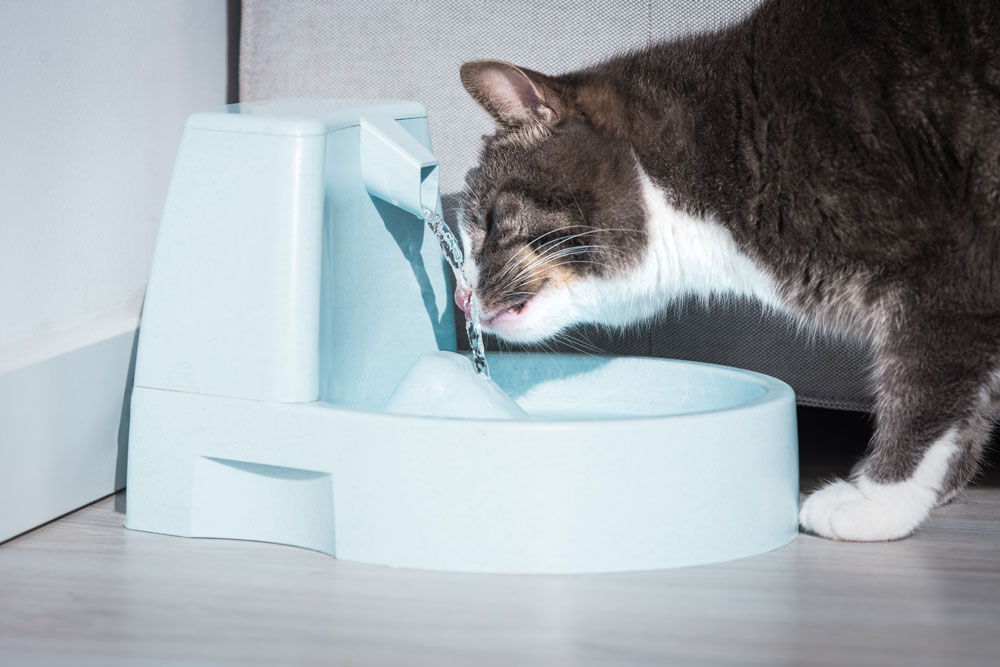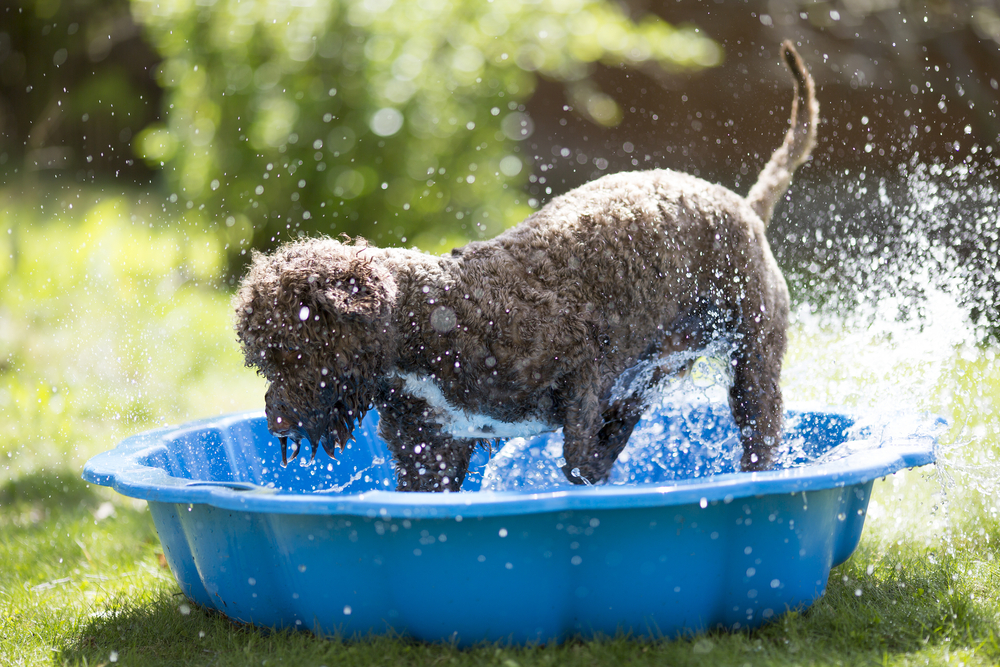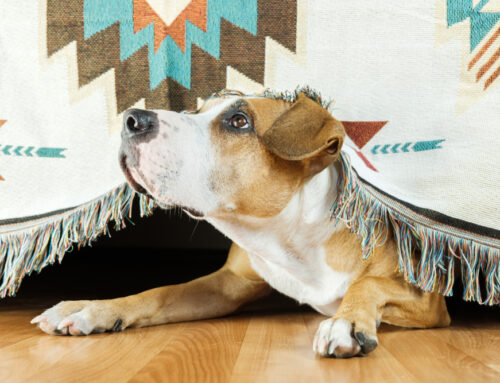Summertime in Arcata, CA means more adventures, longer days, and plenty of chances to enjoy the great outdoors with your pet. But as temperatures rise, so do the risks. Dogs and cats don’t cool themselves as efficiently as humans, and that makes them vulnerable to overheating—even when it doesn’t feel that hot to us.
At Arcata Animal Hospital, we want you and your pet to enjoy a safe, healthy summer. This guide covers the most common heat-related dangers, clinical signs to watch for, and practical steps you can take to prevent serious illness.
How Heat Affects Dogs and Cats
Why Pets Overheat More Easily
Unlike humans, who regulate heat through sweating, pets primarily rely on panting to cool down. Dogs have a few sweat glands in their paw pads, but these are not effective for temperature regulation. Cats use grooming and limited evaporative cooling via paw pads—but they’re even less efficient at shedding excess body heat.
On hot or humid days, this means their body temperature can rise rapidly—especially during exercise, in direct sun, or in confined spaces.
Normal body temperature for dogs and cats:
101.0°F to 102.5°F
A pet is considered overheated if their temperature exceeds 103°F. At 106°F or higher, organ damage and death can occur.
Understanding Heatstroke in Pets
What Is Heatstroke?
Heatstroke, or non-pyrogenic hyperthermia, is a life-threatening condition that occurs when a pet’s body temperature rises beyond its ability to cool down. This causes cellular damage and a cascade of complications affecting the brain, liver, kidneys, gastrointestinal tract, and coagulation system.
Medical Complications May Include:
- Disseminated intravascular coagulation (DIC)
- Acute kidney injury
- Gastrointestinal bleeding
- Cerebral edema (brain swelling)
- Hypoglycemia or electrolyte imbalances
- Secondary infections or sepsis
Immediate intervention and veterinary monitoring for at least 24–72 hours are often necessary.
Too Hot to Handle: A Guide to Heatstroke in Pets
Early Warning Signs of Overheating
Recognizing the signs early is the key to saving your pet’s life. Symptoms may vary depending on species, age, and underlying conditions.
Watch for:
- Excessive panting or rapid breathing
- Thick saliva or drooling
- Bright red, pale, or purple gums
- Elevated heart rate
- Lethargy or unwillingness to move
- Vomiting or bloody diarrhea
- Wobbliness or collapse
- Seizures or unresponsiveness
If your pet exhibits any of these signs, cool them down immediately and seek emergency veterinary care.
High-Risk Pets: Who’s Most Vulnerable?
Some pets are at a significantly higher risk of heat-related illness:
- Brachycephalic breeds (e.g., Bulldogs, Pugs, Boston Terriers, Persian cats)
- Senior pets (especially those with arthritis or cardiovascular disease)
- Overweight or obese animals
- Pets with laryngeal paralysis or tracheal collapse
- Thick-coated breeds, especially when untrimmed
- Pets with heart or respiratory conditions
Brachycephalic Research: Body Condition and Heat Regulation
Keeping Pets Safe in Hot Weather
1. Hydration Is Non-Negotiable
- Provide cool, fresh water at all times
- Add ice cubes or offer frozen broth cubes
- Use pet water fountains to encourage drinking
2. Avoid Midday Heat
- Walk pets during the early morning or late evening
- Avoid exercise during high heat indexes
- Use caution in high-humidity conditions, which hinder evaporative cooling
3. Protect Their Paws
- Pavement and asphalt can reach 140°F+ on hot days
- Always check with the “5-second rule”: press your hand to the ground—if it’s too hot for you, it’s too hot for them
- Consider using protective booties on walks
Walking on Sunshine: How to Protect Your Pet’s Paws This Summer
4. Use Cooling Aids
- Cooling mats, elevated beds, and misting fans
- Damp towels placed under your pet
- Kiddie pools for supervised outdoor play
5. Provide Shade & Ventilation
- Use umbrellas, tarps, or shaded kennels outdoors
- Never rely solely on dog houses—they trap heat
- Indoors, ensure airflow with fans or air conditioning
Heat Safety Tips for Pet Owners
Fun Indoor Activities for Hot Days
When it’s too hot to be outside, keep your pet engaged with indoor play:
- Food puzzles and slow feeders
- Hide-and-seek games with treats
- Training refreshers (e.g., sit, stay, paw)
- Short tug-of-war sessions
- Frozen Kong toys with wet food or peanut butter
Summer Boredom Busters for Pets
Emergency First Aid for Overheated Pets
What to Do Immediately:
- Move to a shaded or air-conditioned area
- Offer small sips of cool—not cold—water
- Apply cool water to paw pads, groin, neck, and belly (avoid ice water)
- Use fans or air circulation
- Transport to a veterinary hospital right away—even if they appear to improve
Do not force drinking, submerge your pet in ice water, or wait for symptoms to worsen.
Veterinary Treatment for Heatstroke
Veterinary intervention may include:
- IV fluids for hydration and blood pressure stabilization
- Oxygen therapy if respiratory distress is present
- Bloodwork and clotting profiles to monitor organ function
- Electrolyte correction
- Medications to manage pain, inflammation, or seizures
- Continuous temperature monitoring
Pets may need to stay hospitalized for 12–72 hours depending on severity.

We’re Here to Help—All Summer Long
At Arcata Animal Hospital, we’re committed to your pet’s safety in every season. Whether you’re planning summer hikes or lounging in the backyard, our team is here
Need help planning for the heat? Schedule an appointment today.
Summary: Key Takeaways for a Safe Summer
- Pets overheat faster than humans
- Know the signs: panting, drooling, lethargy, collapse
- Always provide water and shade
- Walk during cooler times of day
- Heatstroke is a medical emergency
For questions about summer safety or to create a custom care plan for your pet, contact Arcata Animal Hospital.
Stay safe. Stay prepared. And enjoy summer with peace of mind.







Leave A Comment